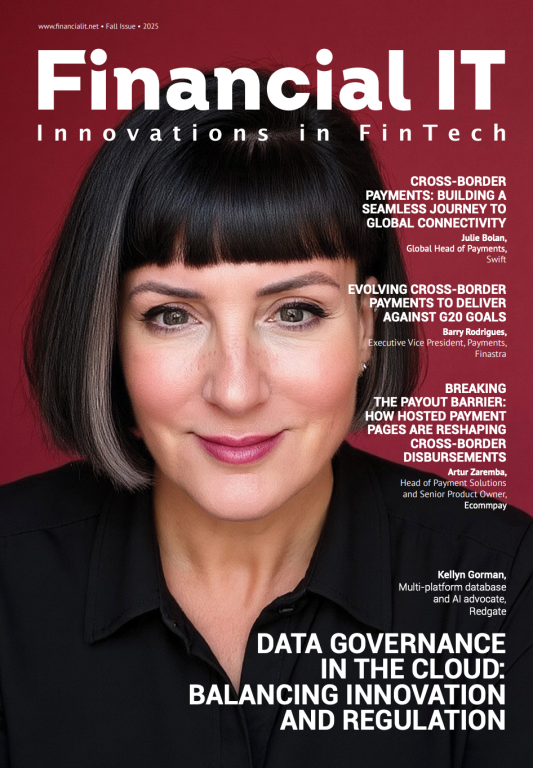Is AI the Answer to Creating Resilient Banks and Financial Institutions?

- Arunava Bag, Chief Technology Officer at Digitate
- 11.04.2025 05:45 pm #AIInBanking #FinancialResilience
The banking and financial services sector, one of the most heavily regulated industries, is under increasing pressure to ensure compliance. Evolving and traditional regulations such as the Digital Operational Resilience Act (DORA), Instant Payments Regulation, Anti Money Laundering (AML), BASEL III, EU AI Act and Payment Services Directive 3 (PSD3) are putting new and more stringent demands on businesses in the sector, adding to the existing pressure that comes with managing client monies and sensitive data.
DORA, in particular, outlines ways that financial players and their service providers must strengthen operational resilience, emphasising the importance of minimising downtime and ensuring system availability. The directive aims to ensure that financial institutions can withstand, respond to, and recover from operational disruptions, reinforcing a culture of proactive risk management. However, recent outages seen in January and February suggest that major resilience challenges remain, even in the post-DORA landscape.
AI can be crucial in helping financial services providers achieve resilience by conducting probable cause analysis, normal behaviour profiling, predictions, automating routine tasks, enhancing issue resolution speed, and reducing the need for manual intervention. While banks have traditionally relied on observability to improve system availability — giving engineers real-time visibility into system performance and failures — AI takes this a step further. By analyzing patterns and trends, event corelations, and so on, AI can predict potential issues before they occur, allowing for proactive intervention and more streamlined operations.
The industry clearly recognises the value and importance of AI and automation tools, with European financial services organisations investing an average of €418.54M in the past two years, according to our latest report of European enterprises.
However, despite this investment, the industry is seeing low returns, with an average ROI of only €429.57M (or 3%). This gap between investment and returns highlights the need for financial institutions to refine their AI strategies and implementation approaches to maximise the benefits of automation and intelligent analytics.
Moving beyond traditional observability
Observability has long been a cornerstone of financial institutions’ IT strategies, allowing them to monitor system health and performance. However, traditional observability models are often reactive, identifying issues only after they have occurred. AI enhances this model by introducing predictive capabilities that foresee potential disruptions and take corrective actions in real time.
In many cases, monitoring happens in siloes through multiple tools, preventing organizations from having a comprehensive, wnd-to-end view. This is where the emerging trend of unified observability comes into play. By integrating vertical observability (combining business, application, and infrastructure KPIs in a single view) with horizontal observability (providing insights into transaction monitoring and process execution) and building on traditional MELT (metrics, events, logs, and traces), unified observability is gaining traction as a holistic approach to monitoring.
By integrating AI-driven observability, financial institutions can gain deeper insights into their IT ecosystems, identifying inefficiencies and optimising system performance. These capabilities are particularly valuable in an industry where even minor disruptions can lead to significant financial losses and reputational damage.
Enhancing compliance and minimising downtime
One of the most significant advantages AI brings to financial institutions is its ability to enhance compliance efforts. With regulatory requirements becoming more complex, AI can streamline compliance processes by monitoring transactions, detecting anomalies and flagging potential risks in real time. This not only reduces the risk of regulatory breaches but also allows financial institutions to adapt to evolving regulations more efficiently.
Cybersecurity is one of the top three areas on the agenda for CIOs in 2025, with GenAI and AI being the other two key focuses. AI-driven automated hardening/compliance checks and associated trend analysis can help organizations advance in this area.
In addition, AI helps minimise downtime by providing predictive maintenance and automated issue resolution. Traditional IT support structures rely heavily on manual interventions, which can result in delayed response times and prolonged system outages. AI-driven solutions leverage machine learning algorithms to analyse patterns, detect irregularities and resolve issues before they impact business operations. This proactive approach ensures higher system availability and reliability – key components of operational resilience.
Embracing a digital-first approach
As the financial services industry moves away from legacy systems and embraces a digital-first approach, AI will play a crucial role in ensuring institutions remain competitive. AI-powered solutions enable financial institutions to modernise their infrastructure, optimise workflows and improve customer experiences.
For instance, customer and prospect interactions are a high priority area for CIOs. AI-driven chatbots and virtual assistants enhance customer service by providing instant and curated responses to inquiries, reducing wait times and improving overall satisfaction. Additionally, AI-powered fraud detection systems analyse transaction patterns and identify suspicious activities with greater accuracy than traditional rule-based methods.
As digital footprint and channels increases, so does the amount of data generated through system interactions. AI is playing a big role in capitalizing on this data by understanding customer sentiment and delivering personalized services.
Building a profitable AI strategy
Despite investing substantially in AI and automation, the finance industry is seeing low returns, with an average ROI of only €429.57M (or 3%). As per some estimates, more than 33% of the digital initiatives aimed at improving operating margins or generating revenue are failing to meet expectations. Though AI adoption BFSI sector is high, only 10% of organizations have achieved their transformational goals. To maximise the benefits of these investments, financial institutions must adopt a strategic approach that aligns AI initiatives with business objectives. This involves:
Investing in the right AI solutions: Not all AI technologies deliver the same level of value. Institutions must prioritise AI solutions that directly address their pain points, whether in compliance, security or operational efficiency.
IT teams collaborating with other CxOs: CIOs and their teams need to focus on co-creating with other CxOs and their departments. That way, the chances to meet or exceed outcome targets from digital investments are much higher.
Choosing the right use cases: Some of the highest value and most feasible areas are enhancing IT visibility and resilience, AI for fraud detection, employee productivity through automation and AI assistants, advanced data analytics for customer engagement, code conversion and generation – to name a few.
Looking to out-of-the-box solutions: Looking beyond the typical solutions can be beneficial for BFSI organisations, particularly in order to remain competitive. Focus on solutions which are very targeted and easy to deploy with minimal configurations, especially in ITOps areas, for faster time to value.
Ensuring seamless integration: AI should be integrated into existing systems without causing disruptions. A well-planned implementation strategy helps minimise transition challenges and optimises adoption.
Focusing on continuous improvement: AI models require regular updates and refinements to remain effective. Financial institutions must invest in continuous monitoring and improvement to maximise long-term ROI.
Balancing automation with human oversight: While AI can handle many tasks autonomously, human oversight remains essential. Combining AI’s efficiency with human expertise creates a more resilient operational model.
Fostering a culture of AI adoption: Success with AI goes beyond technology, it requires a cultural shift. Financial institutions must encourage employees to embrace AI – providing training and promoting collaboration between humans and AI to drive meaningful results.
AI in BFSI: strategy is the secret to unlocking true potential
The BFSI sector has been at the forefront of AI adoption. It is ahead of other industries in the willingness to transform with AI, and generally has a positive feeling about the outcomes. Also, the sector is focused on goals which lean more towards innovation, rather than cost reduction and efficiency.
AI has the potential to revolutionise the financial services sector by enhancing regulatory compliance, reducing downtime and strengthening operational and business resilience. By automating complex processes, detecting faults in real time and enhancing decision-making, AI can significantly improve efficiency, stability and risk management.However, achieving meaningful returns on AI investments requires a well-structured strategy that prioritises efficiency, integration and continuous refinement. Financial institutions must focus on integrating AI into existing frameworks seamlessly, as well as fostering a culture of continuous learning and improvement. It’s also crucial to invest in robust data infrastructure, governance models and ethical AI principles, to maintain trust and long-term sustainability.
Managing associated risk is also vital. In banking, margin compression from interest rate volatility creates added pressure for banks to quickly adopt AI technologies. However, at the same time, governance structures also needsto be strengthened for managing the associate risks. AI is a relatively new technology area. BFSI is a highly regulated and traditional industry, and therefore bringing in technology changes is not easy. The fast evolving technologies like AI offers enormous innovation opportunities and benefits, but their use poses new risks also. As a result, governance, risk, ownership, safety and guard rails have become even more important than ever before. The sector must focus on Responsible AI, AI TRiSM (Trust, Risk, Security Management) in order for deployment to be successful.
Only through a deliberate, efficiency-driven approach, which prioritises safety and governance, can organisations realise the promises of AI, into tangible, lasting benefits, which ultimately reshape the financial landscape for the better.



















